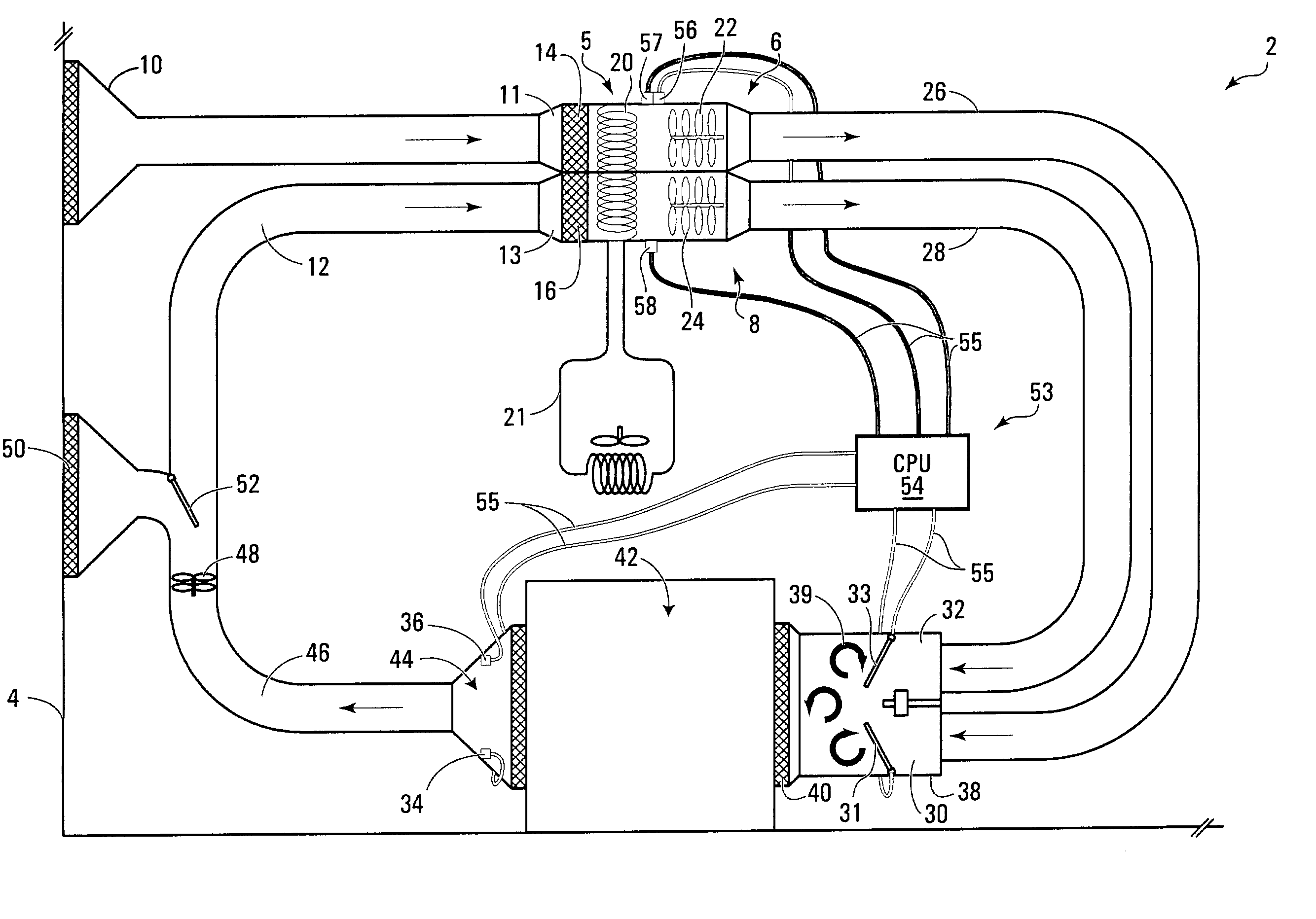Single-coil twin-fan variable-air-volume (VAV) system for energy-efficient conditioning of independent fresh and return air streams
a variable air volume, single-coil technology, applied in ventilation systems, lighting and heating apparatus, heating types, etc., can solve the problems of high construction cost of two-coil systems, inconvenient use of cooling and ventilation equipment, and obvious drawbacks of two-coil systems. achieve the effect of energy-efficient conditioning
- Summary
- Abstract
- Description
- Claims
- Application Information
AI Technical Summary
Benefits of technology
Problems solved by technology
Method used
Image
Examples
Embodiment Construction
[0023]Referring to FIG. 1, an HVAC system denoted generally by the reference numeral 2 for ventilating and conditioning the air in a building 4 has an air-handling unit (AHU) 5 which comprises two separate variable-air-volume (VAV) systems 6, 8. The first VAV system 6 draws in fresh air from outside through a fresh air intake 10. The fresh air intake 10 has a diffuser 11 which expands and slows the fresh air for maximal heat transfer. The fresh air is first filtered through a fresh air filter 14 and then cooled and dehumidified by a coil 20. The coil 20 is a heat-exchanging coil with a single feed of chilled water. A fresh air fan 22 moves the conditioned fresh air downstream through a fresh air duct 26 to a fresh air VAV box 30. The fresh air VAV box 30 is connected to a mixing box 38 into which the fresh air may flow. A fresh air damper 31 regulates the flow of conditioned fresh air into a mixing chamber 39 which is a portion of the mixing box 38.
[0024]The second VAV system 8 draw...
PUM
 Login to View More
Login to View More Abstract
Description
Claims
Application Information
 Login to View More
Login to View More - R&D
- Intellectual Property
- Life Sciences
- Materials
- Tech Scout
- Unparalleled Data Quality
- Higher Quality Content
- 60% Fewer Hallucinations
Browse by: Latest US Patents, China's latest patents, Technical Efficacy Thesaurus, Application Domain, Technology Topic, Popular Technical Reports.
© 2025 PatSnap. All rights reserved.Legal|Privacy policy|Modern Slavery Act Transparency Statement|Sitemap|About US| Contact US: help@patsnap.com



